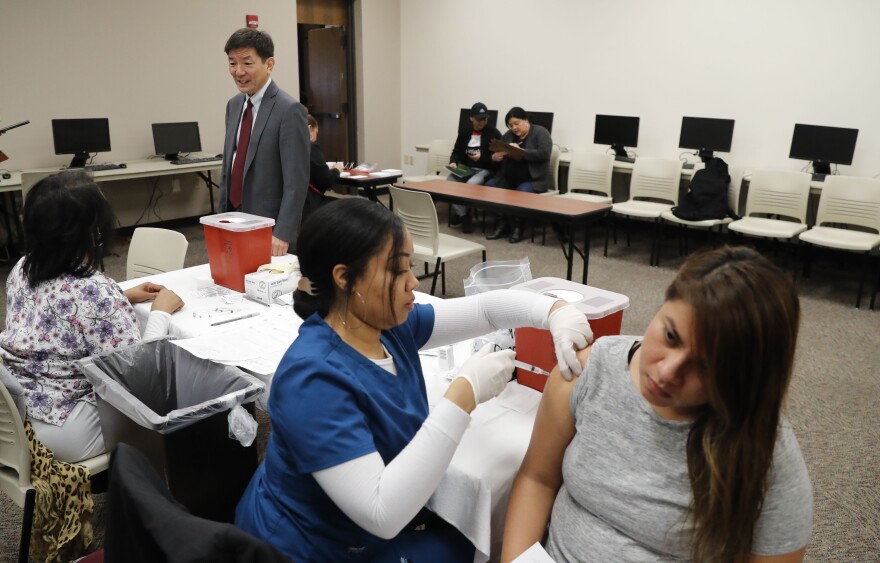Flu and RSV cases are on the decline in Dallas and Tarrant counties, according to local health data.
But while experts see the drop as a positive sign, they're still concerned about the potential for spikes in respiratory illnesses.
According to Tarrant County's Public Health's Division of Epidemiology and Health Information, flu cases started rising in mid-October and peaked Thanksgiving week. The Influenza Surveillance Weekly Report shows that numbers have been dropping ever since, with current cases close to what they were before the climb.
Data shows that 2,866 people tested positive for flu Thanksgiving week. Only 92 people were positive for influenza B.
“It’s been three months of flu,” said Tarrant County Chief Epidemiologist Russell Jones.
RSV cases tracked in a similar fashion: More than 200 people tested positive for RSV Thanksgiving week, with the numbers falling to just under 100 by the end of December.
But COVID-19 remains a concern for local health officials — those cases rose mid-December and again at month’s end, and Jones still considers the region at a high transmission level.
And while flu numbers have peaked for now, health officials are wary of a spike with the appearance of a new strain, as in years past.
“Typically, at the end of a flu season going into February,” Jones said, "we'll see a different flu start to predominate, like a flu ‘B.’ And so there will be an increase of a different kind of flu.”
Last year, for example, Jones said Tarrant County saw the flu peak, fall, only to rise higher six weeks later. That’s why he urges people to get shots and boosters for the flu and COVID-19.
In Dallas County, Stephen Love, CEO of the D-FW Hospital council, says his hospitals have seen similar peaks and declines of flu, RSV and COVID-19 cases. Dallas County showed flu cases peaked Nov. 26, when nearly 25% of hospital flu tests came back positive.
They’ve dropped steadily week after week: By Jan. 7, fewer than 4% of tests were positive.
At Thanksgiving, more than 16% of Dallas County COVID tests were positive. Last week, positive tests fell below 3%.
Like epidemiologist Jones, Love too urges people get vaccinated or boosted. He says with all the diseases still circulating, you may contract the illness. But with the vaccine, you’ll not get nearly as sick.
Love says his hospitals were happy to see decreases for all three viruses, but he’s cautious — especially about a circulating COVID strain.
“There’s the XBB.1.5 variant that’s pretty prevalent in the Northeast, especially in New York,“ Love said. "That variant is in Texas and it’s growing. So we’ve got to watch that."
Additional reporting by Katherine Hobbs



!["Even though [COVID-19] pales in comparison to last year, we don't know where this is going to trend," said Juan Rodriguez, chief epidemiologist for Denton County Public Health. (AP Photo/Seth Wenig)](https://npr.brightspotcdn.com/dims4/default/3f7b563/2147483647/strip/true/crop/6000x3343+0+329/resize/280x156!/quality/90/?url=http%3A%2F%2Fnpr-brightspot.s3.amazonaws.com%2F23%2F39%2F21094a9b4e76ba09fcf4f437dfeb%2Fap23004761194102.jpg)